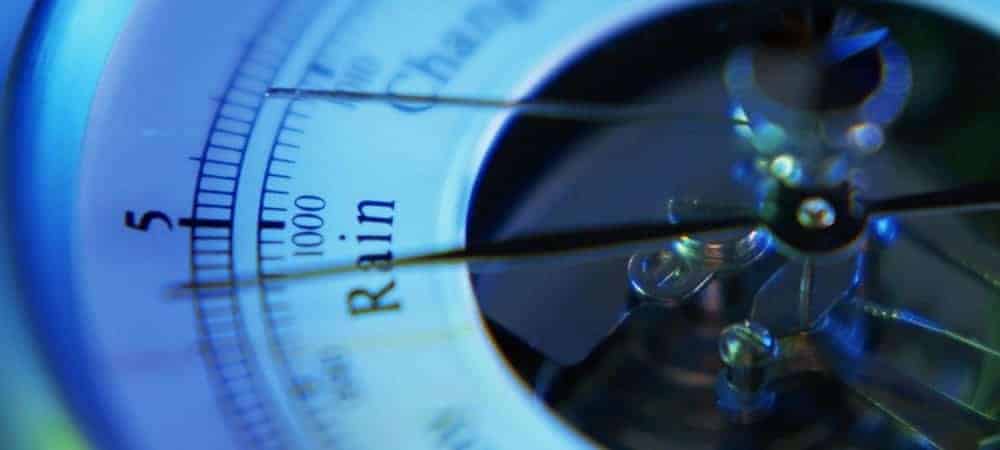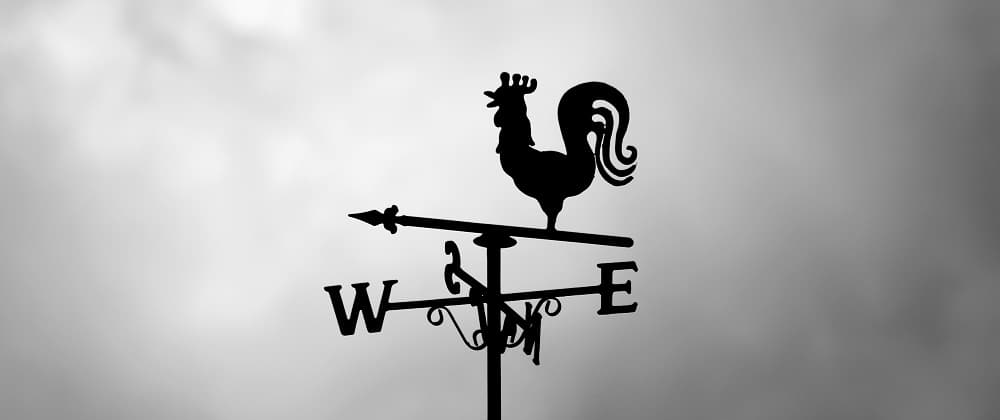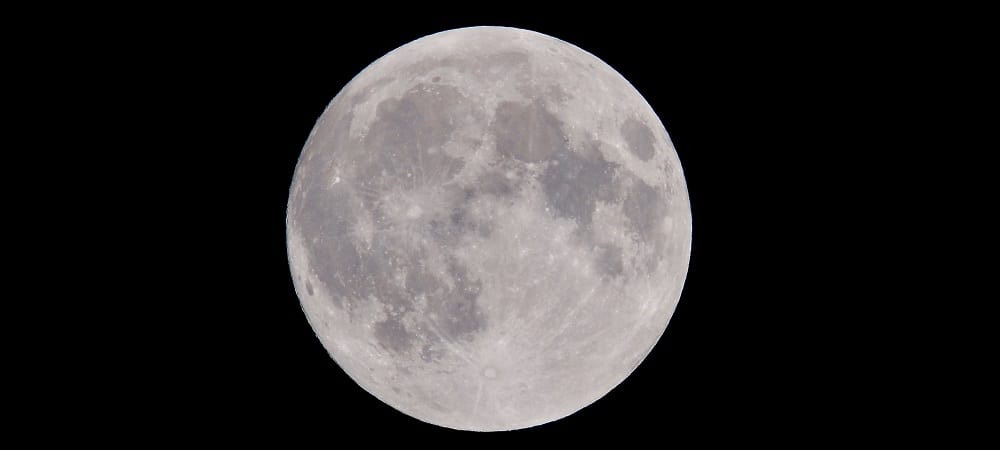A lot gets said about how the air (or atmospheric) pressure, wind direction or even moon phase can impact the behaviour and feeding patterns of carp, but is there any truth to it?
While the full extent cannot be proven, air pressure, wind direction and the moon phase can have an effect on carp fishing. Different weather patterns can potentially affect how carp behave and require you to adjust your tactics more than you would usually.
With many carp anglers planning their sessions around the weather forecast, it is worth taking a closer look to understand why.
Best Air Pressure For Carp Fishing
Air pressure is measured in millibars, or mb. At sea level, the average air pressure is 1013mb, so you could say that any measurement below this would be considered as low air pressure and any measurement above it would be considered as high air pressure.
However, when it comes to carp fishing, most anglers would suggest that below 1000mb would be considered as low pressure and above 1020mb would be regarded as high pressure.

Fishing For Carp When There Is Low Air Pressure
Periods of low air pressure are known within the carp fishing fraternity to be the best times to put some fish on the bank.
While the weather patterns associated with high pressure can reduce the oxygen levels, low pressure patterns usually increase the oxygen levels, which can give carp more energy and encourage them to feed.
As the air pressure decreases, so does the air temperature. Naturally, this can also cause the water temperature to drop and may push the carp deeper into the water column and actively looking for food.
Low pressure isn’t always good news though. Remember that all fish (carp included) are cold-blooded, so if the low pressure brings a cold snap with it, this can make the water temperature plummet which can cause the carp to switch off from feeding altogether.
Trending: Will one of these be the next British record carp? Here are 10 specimens that could take the crown
Is It Worth Fishing For Carp When The Air Pressure Is High?
Absolutely! While high-pressure conditions aren’t commonly known as being ideal for catching carp, if you are sat on your sofa at home then you have no chance at all!
When the air pressure is high, it can reduce the oxygen levels in the water which can cause fish to move higher in the water column, sometimes rendering bottom baits useless.
Adapting your tactics to find the fish can potentially be the difference between a bite and a blank. Depending on the circumstances, it is definitely worth experimenting with a zig rig at various depths or a floating bait.
However, finding the correct depth of the fish isn’t by any means going to guarantee you a bite. The reduced oxygen levels that are often brought on by the high air pressure can make the carp a bit sluggish and ignore your offerings.

Does Wind Direction Affect Carp Fishing?
Winds from different directions bring different weather conditions with them. Checking the forecast for the direction of the winds can give a good idea about the type of weather that will occur.
In the UK:
- Northerly winds usually bring cold temperatures and showers.
- Easterly winds often bring cold air.
- Southerly winds tend to bring warm air with them and, depending on the time of year, can sometimes bring thunderstorms and/or rain.
- Westerly winds are the most common winds in the UK and usually bring rain (now you know why it is so wet!)
As you can see, winds from the north and the east are associated with colder temperatures, which can cause carp to slow down and not feed as enthusiastically.
Winds from the south and west are more commonly known for bringing warmer temperatures, which can have the opposite effect and make them more eager to eat.
It is worth considering the types of wind at different times of the year. For example, if there is a really hot period during the summer and a cool, northerly wind is forecast, this may cool the water temperature slightly and switch the carp back on a little bit.
Alternatively, if a warm southwesterly wind is forecast during a particularly cold spell in winter, it may warm the water temperature and perhaps wake the carp up from their slumber.

Should I Fish Into The Wind?
You may have heard or seen that carp anglers like to fish with the wind blowing into their faces. One of the reasons for this is because the wind can blow the natural food towards the windward end of the lake and the carp will follow it. Another reason is that the wind will help to oxygenate the water, which can increase the feeding activity.
While this is absolutely true in a lot of circumstances, it isn’t guaranteed that carp will behave like this on every venue. Other factors such as lake topography, islands and weed beds all need to be considered before automatically assuming that the carp will follow the wind.
It is also worth considering what type of wind is blowing before deciding whether to fish into it or not. A warm southwesterly is likely to be a good wind to fish into as it may increase the water temperature at the windward end of the lake. Alternatively, a cool northerly wind may cause the carp to stay on the back of the wind where the temperature is slightly warmer.

Moon Phases And Their Effect On Carp Fishing
It takes our Moon approximately 29.5 days to complete one cycle of phases (transitioning from new Moon to new Moon). The phases are:
- New Moon. This is the first lunar phase and the point at which the Moon is not visible to the naked eye.
- First Quarter. This is more commonly known as a “Half Moon”, as 50% of the Moon’s surface is reflecting the Sun’s rays.
- Full Moon. This is when the Sun and the Moon are aligned and the entire surface of the Moon is reflecting the Sun’s rays.
- Third Quarter. This is another “Half Moon”, this time showing the opposite side of the Moon to what you saw during the First Quarter Moon. (which side you see depends where you are on Earth)
You may have heard some carp anglers say “Big commons always get caught during a full moon”, but is there any truth to it?
While there doesn’t seem to be any scientific evidence to suggest a direct correlation between the full moon phase and the frequency with which big common carp get caught, Laszlo Nowinszky confirms that there is a link between the full moon phase and the hatching of insects. This still doesn’t explain why big commons tend to slip up more often than big mirrors, but the hatching of insects would create an abundance of natural food and may encourage the carp to feed like they are at an all-you-can-eat buffet.
With that being said, other anglers report that their most successful sessions often occur during a new Moon phase. Personally, I always notice a lot of carp movement during the new Moon phase but, whether it is a coincidence or not, the new Moon phase often brings a spell of low pressure with it, which could add more weight to what we touched on earlier in the article.
With so many variables at play, I think that it is difficult to arrive at a one-size-fits-all answer. As carp anglers, our best success tends to happen when we adapt to the situation or the conditions at any given time so, all the while we keep doing that and keep our rods in the water, we are always in with a chance.
Conclusion
While all of the above has been proven to be true time and time again, there is no guarantee that it will happen at every venue.
Regardless of the air pressure, the wind direction or the moon phase, every lake is different and it is up to us to learn what makes the carp tick on our chosen water. Carp will behave differently from lake to lake, so if you don’t know much information about the venue you are fishing, local knowledge from other anglers can prove to be invaluable.
If you don’t have the luxury of learning from the regular anglers on the lake, you will need to spend more time on the bank and learn from your own experience.
How much of an impact do you think that the weather has on the outcome of your fishing sessions? Do you plan your time on the bank to coincide with particular weather patterns? Or do you just get out as and when you can? Please let me know your thoughts in the comments.

